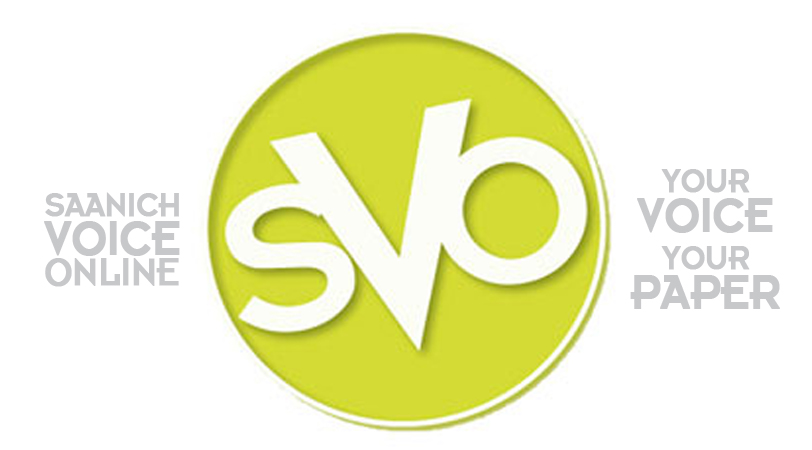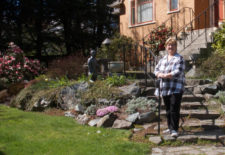Will BC Make History?
The Referendum on Electoral Reform
By Sue Stroud, citizen reporter
From now until November 30, 2018, BC is being asked to engage and respond to a referendum on if and how we fundamentally change our democracy.
Yes, it’s that important a decision.
Usually voters are asked to choose a representative who then votes for or against all proposed legislation for a period of four years. In the case of a referendum, the voter is given the responsibility to become informed about a proposed public measure or law and then the opportunity to have a direct say on whether that proposed public measure or law moves forward to become law.
While referenda are rare in BC, two have already been held on electoral reform – one in 2005 and another in 2009. Unlike this year’s referendum, the question in the 2005 and 2009 referenda was whether to adopt a particular type of proportional representation, the Single Transferable Vote (STV). STV was the recommendation of the Citizens Assembly on Electoral Reform. The Assembly was established just for the purpose of the 2005 referendum. It was made up of a chairperson, a male and a female delegate from each of BC’s political constituencies, and two representatives from First Nations.
For the STV vote to pass it originally had only to pass a simple 50% + 1 threshold, but this was changed (after the referendum had already begun) to 60% + 1 throughout the province, plus at least a simple majority in 60% of the ridings. While STV was favoured by the majority with nearly 58% of those who cast ballots voting in favour of it, it did not however meet its revised higher threshold of 60%. By 2009 the number of supporters had dropped to 39% in favour of STV.
And here we are again, or are we? What’s different this time?
The first difference in this referendum over the 2005 and 2009 referenda is the government’s support of a positive outcome for electoral reform. The BCNDP and the BC Green Party have long been supporters of proportional representation and in fact both campaigned on it. Both consider their support in the election to also be support for electoral reform. The BC Liberal Party has never been a fan.
Another difference from the earlier referenda are the questions themselves – and how they came to be. This year’s referendum was informed by an extensive public consultation that determined what would be asked, how it would be asked, and how the final decisions would be made.
On November 23, 2017 the Attorney General, David Eby, launched the How We Vote public engagement. The purpose of the engagement was to inform and educate British Columbians about voting systems and the coming referendum, and to provide an opportunity to help shape key elements of the referendum, including the ballot question.
The engagement process included a website and questionnaire on How We Vote. The website saw more than 180,000 hits and more than 91,000 people responded to the online survey over a several week period. The process also included questionnaires that went to a demographically balanced panel of 1,101 voters from around the province. The final report on the engagement process with recommendations was released first to the public, and then to the Premier on May 30, 2018. A link to that report can be found HERE.
The information gathered in the engagement process was used to help decide how the public campaigns both for and against electoral change will be conducted, as well as shaping the referendum itself. Along with the two-question ballot, and determining the three options for a new voting system, the report recommended how the public campaign leading up to the vote would be conducted.
It recommended the Chief Electoral Officer select two designated groups – one for electoral reform, one against reform. Both groups would be provided with $500,000 in
public funding for the purpose of stimulating public interest and debate about the choices on the referendum ballot. It also recommended that the Chief Electoral Officer be responsible for providing neutral and factual information to voters about the referendum, including informing voters about the voting systems appearing on the referendum ballot.
The report also demonstrated that people would be more comfortable if there was an option to change back to First Past The Post after a couple of elections with the new system recommending that a second referendum be held after two provincial general elections in which the proportional representation voting system is used on whether to keep that voting system or revert to the First Past the Post voting system
“It will be up to British Columbians to decide whether to change our province’s voting system, and it should also be up to British Columbians to decide whether to keep a new voting system after they’ve tried it,” said the Attorney General. “By legislating a confirming referendum after two general election cycles, our government is giving voters a safety valve to revert to the previous voting system after an opportunity to actually experience both systems.” (BC Gov News Oct 2 2018) “This confirming referendum would allow British Columbians, not politicians, to have the final say on the voting system,” said Eby. “If, during either referendum, voters decide that the current system is preferred, the Government of B.C. will be bound by law to respect that decision.”
How complicated is the ballot?
The ballot has two questions. The first question simply asks the voter what system the province should use for provincial elections: First Past the Post (FPTP) or a proportional
voting system. The second question asks, if pro rep – what form of proportional representation would you prefer?
A voter need only answer the first question on the ballot if they are more comfortable doing so. Whether they vote for FPTP or a proportional representation voting system, they are not required to specify what kind of pro rep in question two.
The second question concerns the three types of proportional representation on offer. The answers collected from this question are meant as a guide for an expert committee who will determine the final choice and how it is rolled out. This committee is comprised of Elections BC, representatives from all political parties in the Legislature and expert academics familiar with electoral systems. The committee will make its choice guided by four principles: proportionality, maintaining local representation, simplicity,and number of seats in the Legislature (no more than 95).
The report states, “None of the political parties represented in the Legislative Assembly under its current composition would have a majority on such a committee, and therefore the committee’s recommendations would require thoughtful compromise among all the parties.“
The voting period ends at 4 pm on November 30 and it will be mid-December before we know the results of the referendum. If you do not have a ballot by November 2 call Elections BC 250-387-5305.
Proportional Representation is used around the world with the UK, US and Canada being the outliers among developed countries with 80 per cent of OECD countries (our peers), such as Germany, New Zealand, Sweden, and Denmark using a proportional voting system.
The simple explanation of a proportional representation system is that it sees the vote count better equal the seat count. If 40% of the people voted for a party, then that party will enjoy no more than 40% of the power. This creates a system that often sees smaller parties having greater representation in the legislature – not more than the vote count that they receive – but equal to it. In a three, or four-party race, this will create a legislative assembly much closer to what the voters voted for. That said, all parties must receive at least 5% of the vote to be elected to office.
Our First Past the Post system works very well for a two-party system, but sees inequities in vote count vs. power when three, or four parties share popularity among the voters. It happens, as was the case in the Quebec election this year, that the party that gets 100% of the power was voted in by only 37% of the voters – with the three other parties getting 63% of the popular vote, but no agency to make change or represent their constituents at all. To avoid this kind of inequity the voters are often asked to vote strategically, reducing a rich plurality of choices to just two – so that the FPTP system works at voting out the worst of the lot.
The choice is yours. There are many non-partisan resources online to help inform you as to how you can best represent your values in your vote. One such resource is, “Would You Rather – BC 2018 Referendum Wizard.” The online tool is an independent educational project that is not affiliated with any of the referendum campaigns. They claim to have made reasonable efforts to make the questions and results as free from bias as possible, although admit that inevitably some informed judgements had to be made in the preparation of the questions. ElectionsBC reviewed the site and exempted their presentation and distribution from requirements to report as referendum advertising. See below for an extensive list of other resources.
If you’re still not clear – tune into Global B.C., CBC, CKNW radio and globalnews.ca at 7 pm on Nov 8 to hear Premier John Horgan and BC Liberal Leader Andrew Wilkinson in a 30-minute debate on electoral reform.
And then fill out your ballot and make your voice heard, before 4 pm on Nov 30th.
RESOURCES:
Elections BC
FairVote Canada
No ProRep
Why the Arguments Against Electoral Reform in BC are Wrong – BC Civil Liberties Association
The Canadian Centre for Policy Alternatives – Electoral Reform in BC
Recommendations – No BC Proportional Representation Society
Vote PR BC
Christy Clark supports Proportional Representation
Media:
Your Guide to BC’s Proportional Representation Vote: A Tyee Series
Andrew Coyne: Which electoral system for B.C.? Any option is better than the status quo
Former NDP premier Glen Clark votes No on electoral reform


